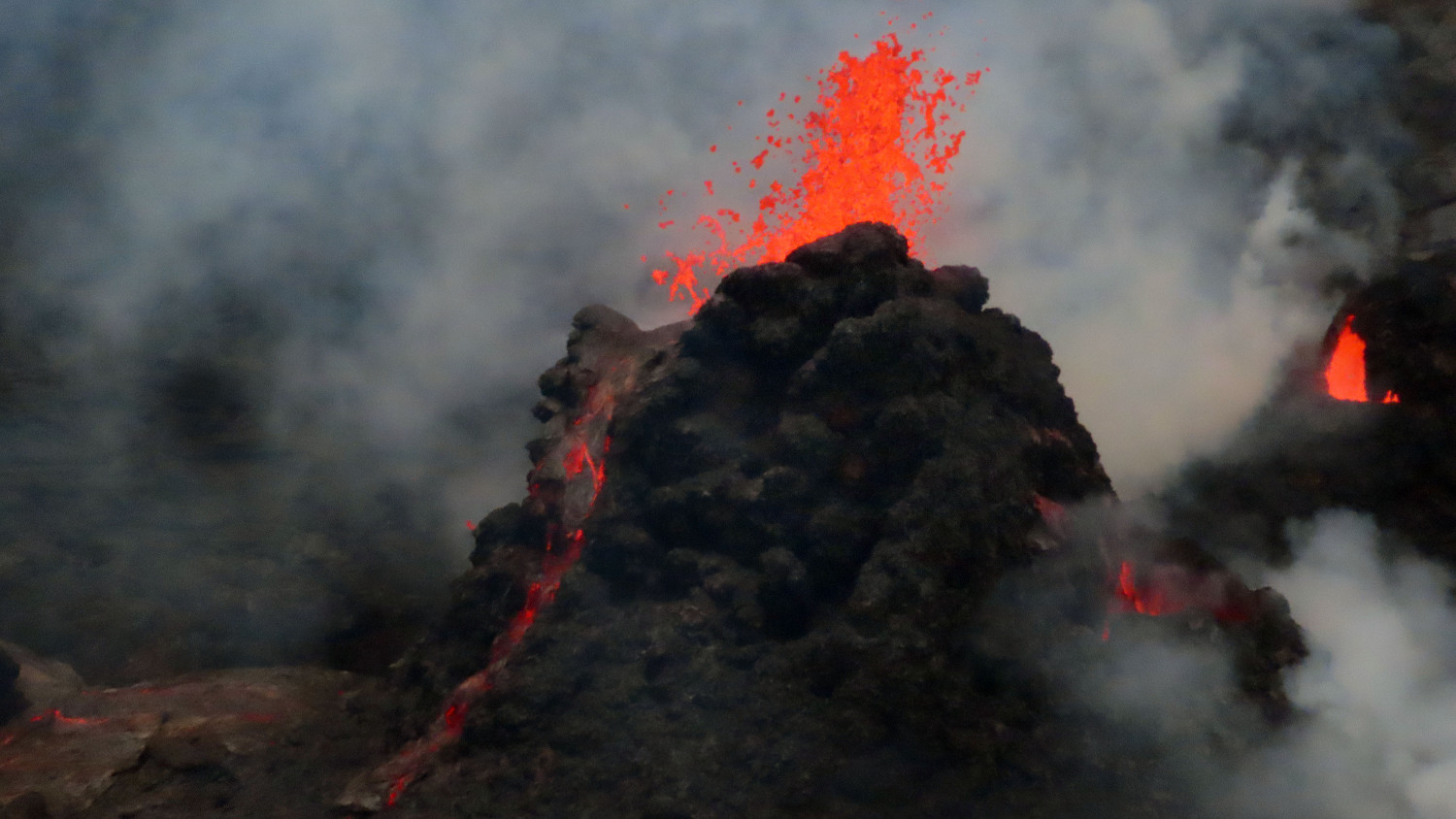(BIVN) – The summit eruption of Kīlauea Volcano continued within Halemaʻumaʻu crater over the past 24 hours.
The USGS Hawaiian Volcano Observatory says all recent activity has been confined to the smaller active lake within the crater, and there are no indications of activity migrating elsewhere on Kīlauea. From the Thursday morning update:
Halemaʻumaʻu Lava Lake Observations: Eruption of lava from the western vent into the active lava lake surface (approximately 2.5% of Halemaʻumaʻu crater floor) continued through yesterday. The active western lava lake surface of Halema‘uma‘u crater has remained at a steady elevation over the past 24 hours, corresponding with slightly deflationary tilt yesterday. The highest point on the Halemaʻumaʻu crater floor has risen approximately 97 meters (318 feet) since the eruption began on September 29, 2021. The erupted volume is 45 million cubic meters (59 million cubic yards) of lava as measured on January 25, 2021.
Summit Observations: Summit tilt yesterday was flat, becoming slightly deflationary overnight. Slight deflationary tilt continues at this time. Seismic data shows that the volcanic tremor is still elevated this morning and earthquake activity at the summit remains below background levels. A sulfur dioxide (SO2) emission rate of approximately 2200 tonnes per day (t/d) was measured on March 8.
Rift Zone Observations: No unusual activity has been noted along the East Rift Zone or Southwest Rift Zone; low rates of ground deformation and seismicity continue along both. Measurements from continuous gas monitoring stations downwind of Puʻuʻōʻō in the middle East Rift Zone remain below detection limits for SO2, indicating that SO2 emissions from Puʻuʻōʻō are negligible.
The USGS HVO will issue a brief eruption “Status Report” around 3 p.m. HST, intended to give Hawaiʻi Volcanoes National Park staff and visitors an idea of likely lava activity for the coming evening.


by Big Island Video News9:31 am
on at
STORY SUMMARY
HAWAIʻI VOLCANOES NATIONAL PARK - The summit eruption continues, with all recent activity confined to the smaller active lake within Halemaʻumaʻu crater.